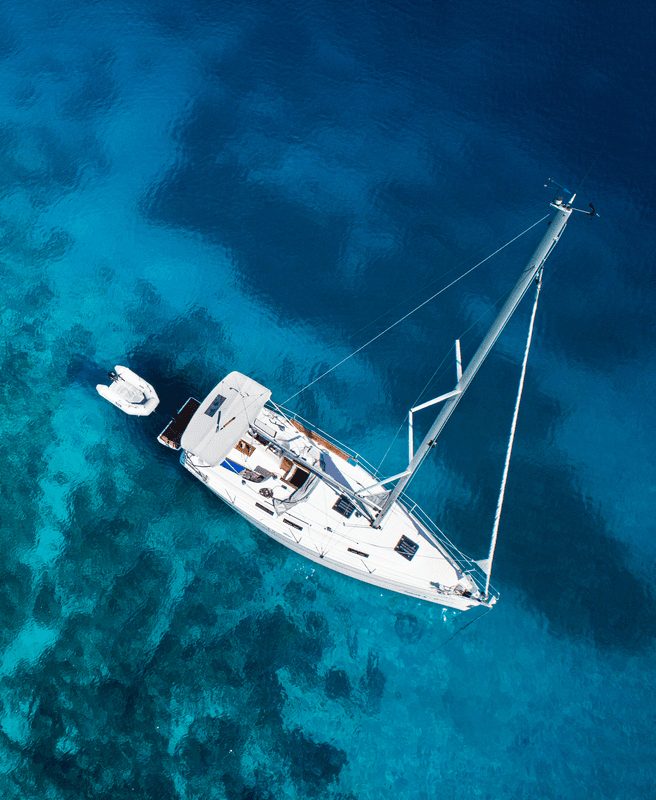Happiest Countries in the World
November 1, 2023
Happiness is a serious business. Did you know the United Nations passed a resolution to make the 20th of March International Day of Happiness?
There’s a growing consensus about how we should measure happiness.
On the release of the latest World Happiness Report, this article will explore the countries that top the list of happiest countries in the world and the factors taken into account.
Nomad Capitalist has helped 1,500+ high-net-worth clients from around the world. You can find out how here.
What Makes a Country Happy?
There are six measures that, when combined, make up the Gross National Happiness (GNH) of a nation. They are:
- Gross Domestic Product.
- Social support.
- Healthy Life Expectancy.
- Freedom to make Life Choices.
- Generosity.
- Perception of Corruption.
Together, these measures cover a nation’s economic welfare and social fabric. They encompass the sense in which people feel safe, connected with others, physically and mentally healthy, have work-life balance, and can choose what to do with their lives.
A critical measure is people’s trust in government and others to act in their best interests and not engage in corrupt practices.
Happiest Countries in the World
Before we get to the happiest countries in the world, let’s remember the nations where happiness is in short supply. Of the 137 countries listed, the Republic of the Congo, Zimbabwe, Sierra Leone, Lebanon, and Afghanistan sit at the foot of the table.
It’s no coincidence that these least happy nations face various challenges, from conflict to economic mismanagement, crime, corruption, and political instability.
Though these issues are not addressed directly in the report, the countries where people feel most positive are those with stable economies and fundamental democratic freedoms. It’s clear that those conditions are not present for the least happy.
We can only hope that things improve and when next reported, people there have more to be happy about. After all, happiness isn’t something to be taken for granted.
So, what are the happiest countries in the world?
Netherlands
The Netherlands is the 17th-largest economy globally and the fifth-largest in the EU. Around 17 million people live in the Netherlands; the average salary is nearly $3,300 per month. The GDP per capita is $45,294.78, and life expectancy is near 82 years.
The cost of living varies considerably between Amsterdam and the rest of the country, being the capital and most expensive city. Because of its geographic location, most people in the Netherlands speak at least two languages: 90% speak English, 71% speak German, and 29% speak French. In 2002, the Netherlands had 15.6 million foreign visitors.
In all of the criteria for measuring happiness, the Netherlands does well. Ranked consistently among the happiest countries in the world, the nation is known for strong social networks and support systems, a high quality of living, and a progressive social and political climate.
The Netherlands prioritizes work-life balance with a comparatively short working week and increased vacation days. Its policies around drug decriminalization and LGBTQ rights promote individual choice.
Iceland
One of the most remote countries in the world, Norway has the lowest population density in Europe, with 3.3 people per square km. The Nordic island has a population of 375,318, with an average net salary of €2,800 per month.
The tourism, fishing, power, and pharmaceutical industries are the leading employers. Iceland has Europe’s second highest life expectancy – 80.9 years for men and 83.8 years for women – with dependence on geothermal resources instead of fossil fuels and an unpolluted environment a significant factor in longevity.
A regular in the upper quotient of word happiness countries, Iceland has a strong sense of community that binds its initiative and immigrant populations. With a culture borne of its remoteness, people there enjoy strong community bonds and a deeply ingrained sense of neighborly concern and duty toward the vulnerable.
The socioeconomic divide in Iceland is relatively narrow, with private schools a rarity and little gap in feelings of well-being between those with the most and least. Its low crime rates have contributed to a prison capacity of just 175, and violent crime is at such small levels that police there do not have firearms.
Iceland has a healthy population with a fish-based diet, and people there enjoy a sporty, outdoor lifestyle. Icelanders are also a creative bunch, with an impressive 10% percent of the population publishing a book in their lifetime.
Denmark
Denmark has consistently ranked near the top of the happiest countries in the world and retains 2nd spot. It is a highly-developed nation, with a population of 5,932,654 and GDP growth of 3.8% in 2022. Currently, the 38th largest economy in the world, what perhaps contributes more to its happiness is “Hygge,” which translates to ‘high-quality social interactions in a comfortable environment.
The term describes what Danish psychologist Marie Helwif-Larsen calls something integral to people’s well-being. Hygge builds camaraderie and offers support and easygoing fun to help people make the world happier.
Denmark also has low crime rates and public corruption associated with the rest of the Nordic Countries, strong social cohesion, and high trust in government.
Danes foster a shared sense of purpose through culture, close kinship, and shared responsibility for social welfare. Danes pay some of the world’s highest taxes – up to 52.07% income tax, 25% VAT on many items, and 150% of the value over specified limits for new cars.
However, the vast majority do not mind; in return, they get free healthcare, no college tuition fees, subsidized child care, and the provision of care helpers for the elderly.
A country of low income inequality and high gender equality, Denmark supports work-life balance with six weeks of mandatory vacation a year and 52 weeks of maternity leave.
Finland
Finland is ranked the happiest country in the world for the sixth time in a row. Its population of 5.54 million people has an average monthly salary of $4,207 USD per month and a life expectancy of 82.48 years.
Like their Scandinavian neighbors in Denmark, Finns pay high taxes – the top income tax rate is expected to reach 56.95% by the end of 2023. In return, they enjoy funded social initiatives that promote a higher quality of life, health, and happiness.
When asked by the This is Finland website about what contributes to their happiness, people identified an ‘infrastructure’ of happiness – the economy, education, healthcare, democratic governance, human rights, and a culture of volunteering.
The nation and its people must be doing something right. Since 2018, it has owned the number-one slot. It’s no coincidence that Finland has high levels of trust, transparency, and civil and political freedoms.
Conclusion
In many ways, happiness is hard to quantify; it’s multifaceted and, as emotions go, somewhat elusive. The work of the United Nations in its World Happiness Report is vital because it attempts to understand the conditions that allow people to be happy and their nations to benefit. Conversely, it gives a baseline by which less happy countries can improve.
A common theme among those nations that do well is ‘belonging.’ People in the happiest countries in the world, like Iceland, Denmark, and Finland, share a common purpose because they feel connected to each other and safe; they have social conditions that give them choice, freedom, and a path to achieve positive life outcomes.
Much of this is afforded by high taxation and generous welfare systems, but ultimately, citizens believe their government is doing the right thing. Do you?
Nomad Capitalist is a turnkey solution for offshore tax planning, dual citizenship, asset protection, and global diversification. Find out more here.


How to Get UAE Citizenship – The Complete Guide
Sovereignty – both national and personal – shapes ambition, secures wealth, and defines status in a shifting global order. For the high-achieving global citizen, acquiring a second or even third passport is more than a lifestyle upgrade; it’s a strategic move in long-term financial and geopolitical positioning. But not all citizenships are created equal – […]
Read more

A Gateway to Central Asia: New Kazakhstan Golden Visa Program for 2025
Central Asia just raised the stakes in the golden visa game. In May 2025, Kazakhstan officially launched a 10-year Golden Visa program in an ambitious move to position the country as a serious contender in the global investor migration space. At a time when other international regions are rolling back their citizenship and residency options, […]
Read more

Top Countries Offering Golden Visas in 2025
Residency is no longer about lifestyle – it’s about leverage In an increasingly unpredictable world, Golden Visas offer something most governments can’t: certainty in exchange for capital. They are more than migration tools; they are strategic safeguards offering residence rights, future citizenship, global mobility, and access to tax-friendly jurisdictions. For investors, entrepreneurs and globally minded […]
Read more





